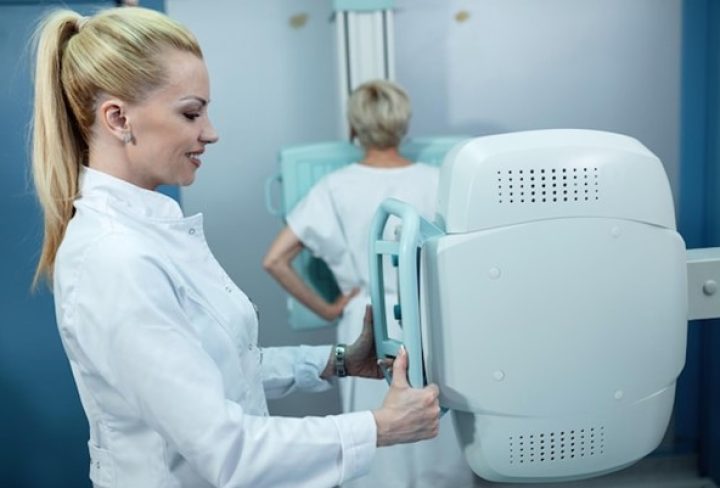A mammogram is a type of X-ray to detect breast cancer.
The test plays a very important role in diagnosing breast cancers early, reducing the number of deaths due to breast cancer.
It is also helpful in examining any abnormal lumps or growths in the breast tissue.
It is essential for women over 40 to get a mammogram every year.
Why is Mammogram Done?
A mammogram is a type of test that can be used for two purposes:
Screening: To check for any signs of breast cancer in people with no symptoms.
Diagnosis: To investigate any symptoms related to breast cancer, such as
- lumps
- swelling
- changes in breast size or shape
- nipple retraction or discharge
- breast pain
- skin issues like redness or itching
Mammogram: How To Prepare?
- Let the doctor know if you are pregnant before the test.
- Do not apply deodorant, lotion, or cream to the breast or armpits.
- Avoid scheduling the test during the menstrual cycle.
- Eat and drink normally before the test.
- Inform the doctor about any medication you are taking.
- Remove all jewellery before the test.
Mammogram: What to Expect?
- You need to stand in front of a machine, and the technician places one breast on a platform and adjusts the height.
- Arms, head, and torso are positioned to avoid obstacles.
- The breast is compressed against a plastic plate to spread the tissue evenly.
- Compression may cause pain or discomfort, so the technician should know if it is unbearable.
- Compression helps to reduce radiation exposure and prevent blurring.
- You must remain still and hold your breath while the images are taken.
- Images are captured from different angles and displayed on a monitor.
Myth and Fact: Mammogram
Myth: Mammograms are always painful.
Fact: While mammograms can be uncomfortable for some women, they are not usually painful. Some women may experience mild discomfort or pressure during the procedure, but it should not be unbearable.
Myth: Mammograms can cause breast cancer.
Fact: Mammograms use low doses of radiation, which are considered safe and do not cause breast cancer.
Myth: Mammograms are only necessary for women with a family history of breast cancer.
Fact: Mammograms are recommended for all women over 50, regardless of their family history of breast cancer. Women with a higher risk of breast cancer may need to start screening younger or have more frequent mammograms.
FAQ: Mammogram
Even after the mammogram, is a self-examination of the breast important?
Yes, even after a mammogram, it is important to continue self-examination of the breasts. While mammograms are an effective screening tool, they cannot detect all types of breast cancer, particularly in younger women with more glandular tissue than fat tissue in their breasts. Therefore, it is essential to regularly monitor your breasts at home and have them examined by a healthcare provider at least once every three years starting at age 20 and annually starting at age 40.
Are mammograms safe?
Mammograms are considered safe for most people. Although mammography involves exposure to low radiation levels, the risk is minimal. If a person is pregnant and requires a mammogram, they can wear a lead apron to protect the fetus during the procedure. However, mammograms are generally not routinely recommended for pregnant women unless necessary.

